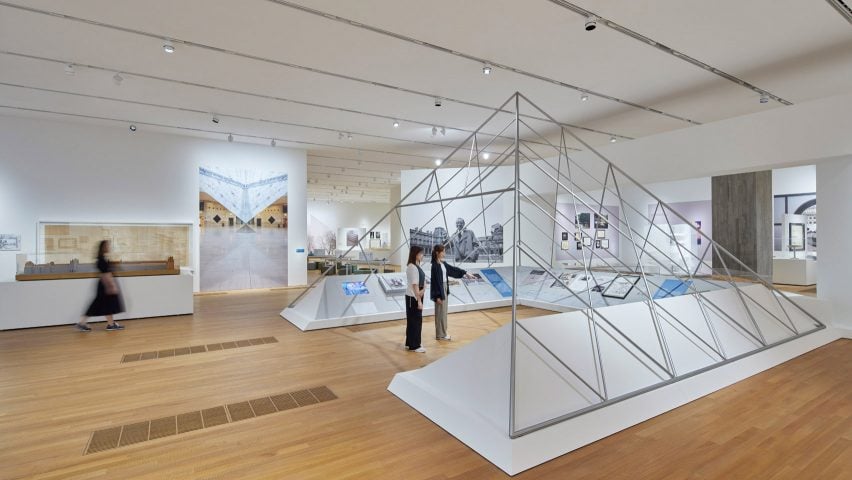
IM Pei retrospective shows "architecture and life to be inseparable"
A retrospective of architect IM Pei at the M+ Museum in Hong Kong, aims to examine his architectural projects in social, cultural and political context.
Named IM Pei: Life is Architecture, the exhibition, which according to the museum is the first full-scale retrospective of the Chinese American architect, documented Pei's seven-decade long career.
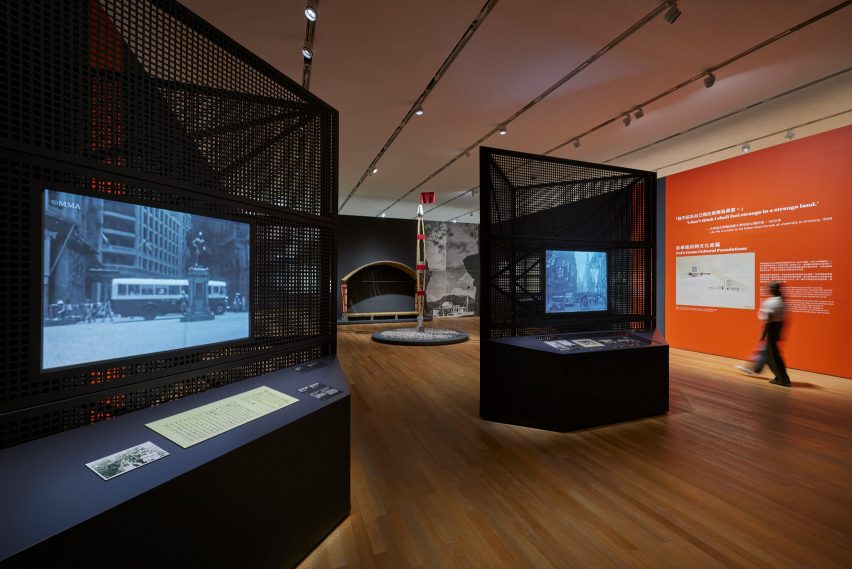
Curated by M+ Museum design and architecture curator Shirley Surya and Nieuwe Instituut director Aric Chen, the exhibition features more than 400 objects, including original drawings, models, photographs, films, and documentation that has never been exhibited before.
The curators approached the exhibition through six chapters, summarising Pei's life and work that "not only define his unique practice, but also place his architectural projects in dialogue with social, cultural, and biographical trajectories, showing architecture and life to be inseparable".
"Though one of the world's most famous architects, IM Pei and his contributions are relatively little understood," said co-curator Surya. "We hope this exhibition will further shed light on a figure who influenced countless individuals, cities, and, indeed, the world."
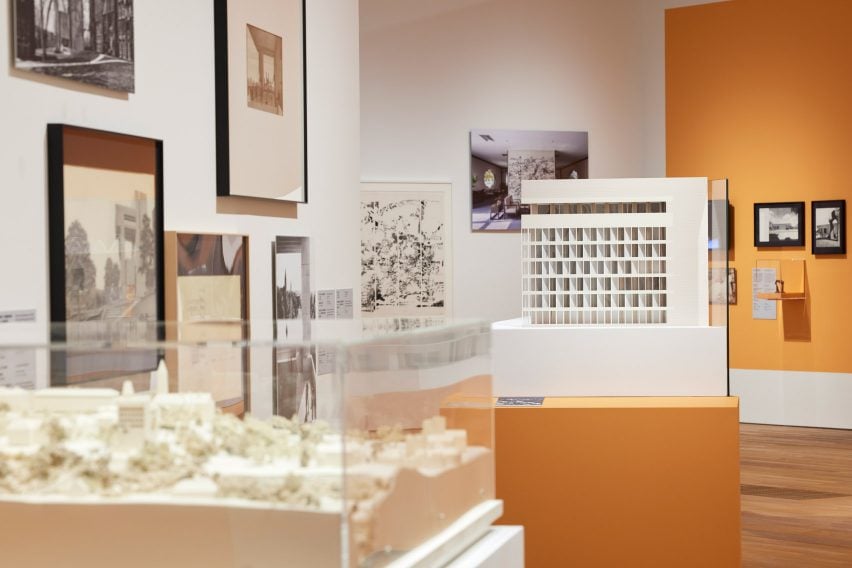
The exhibition begins with an introduction of Pei's upbringing and architectural education, which laid the foundation of his future practice of confronting tradition and modernity across various cultures.
It then follows with his lesser-known period of working for Webb & Knapp in New York, the largest real-estate development company during post-war America, where he contributed to the regeneration of US cities in the 1960s.
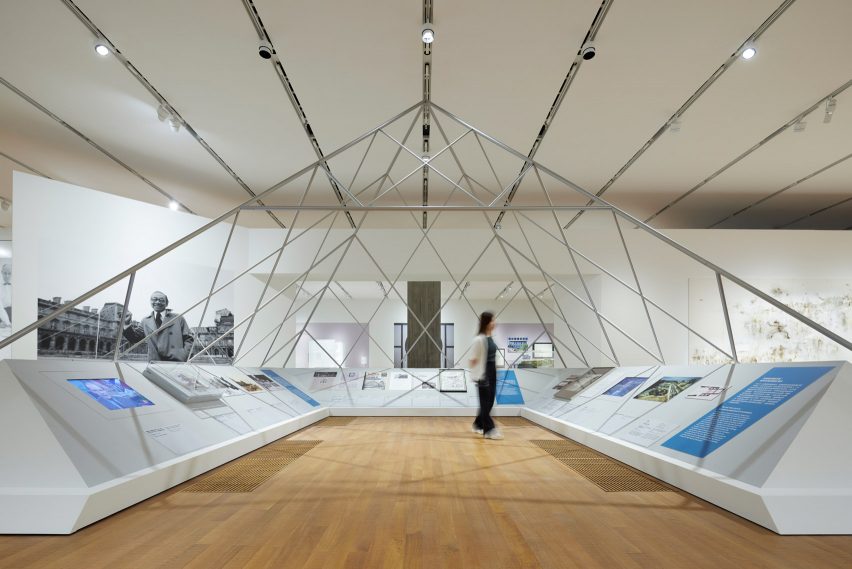
One of them is Bedford-Stuyvesant Superblock in Brooklyn New York, one of the largest African-American communities in the country at the time, where Pei proposed integrating landscaped paths, parks, and playgrounds to the gridded streets for the local community to gather and social.
"For Pei, the success of urban redevelopment was inseparable from broad programmatic thinking intended to alleviate social and economic ills," said Surya.
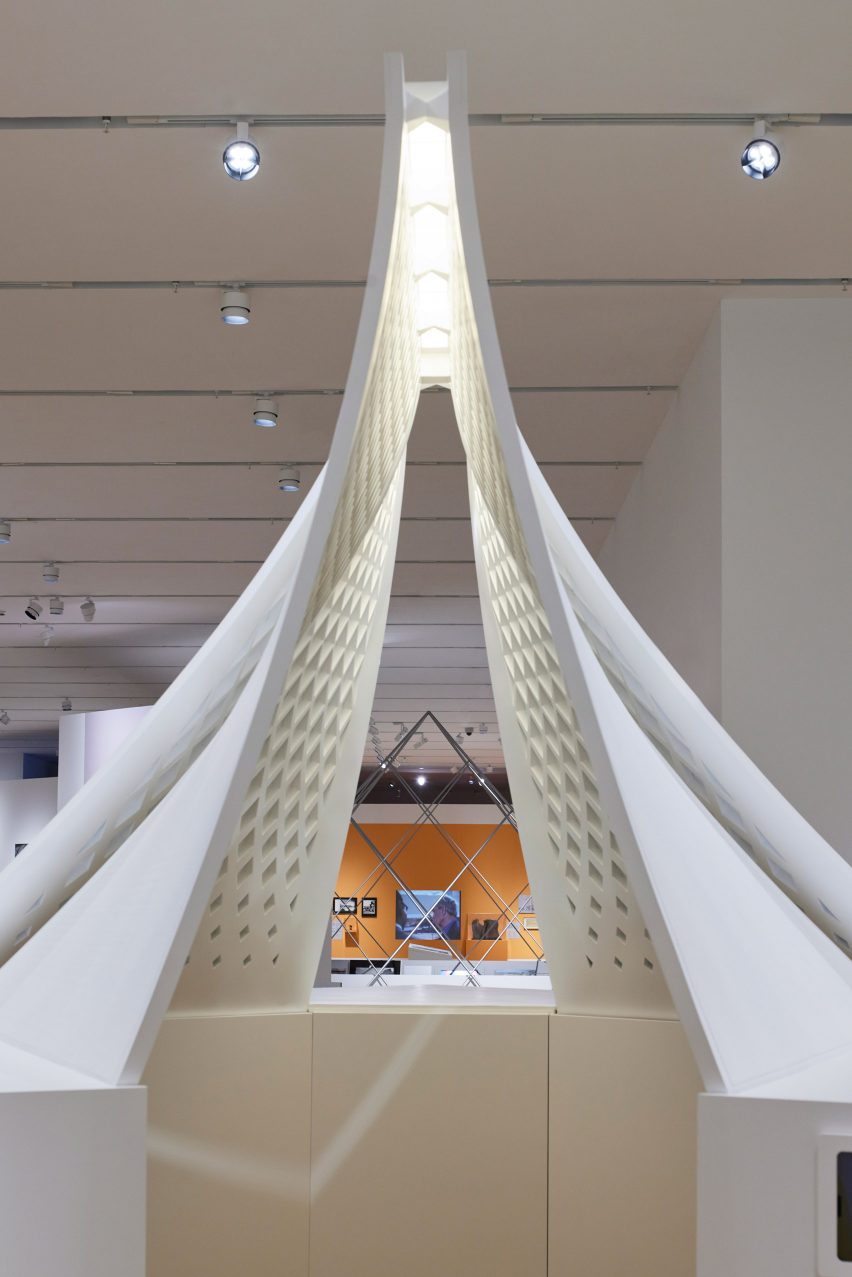
At the centre of the exhibition stands a mockup of Paris's Musée du Louvre pyramid, perhaps Pei's best-known project, on a base displaying media coverage of the project from the time of its construction.
According to Surya, Pei is understudied but often reported, which informed the curatorial direction of the exhibition.
"It's interesting to argue the value of architecture lies in theories or in production," Surya told Dezeen. "Our angle here is it's as a production."
"It's no longer just about how you design it, but what it looks like, how it was conceived, how did it get manifested, what does it mean to the public, it's not just about a formal analysis, is it this '-ism' or that '-ism', he doesn't play that game, he just built," she continued.
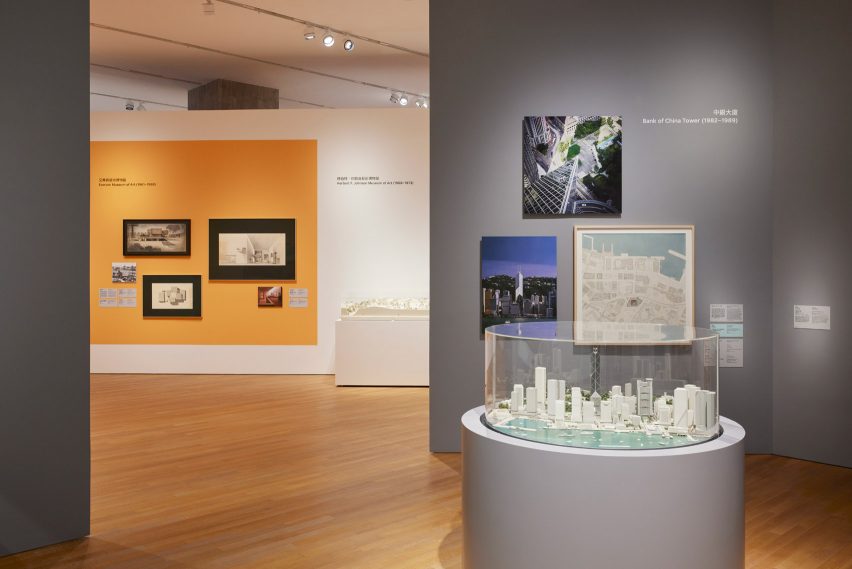
The exhibition concluded with a chapter called Reinterpreting History through Design, which aims to demonstrate how Pei's made modern architecture relevant to different histories and traditions.
This section included the Museum of Islamic Art in Doha, where Pei aimed to create a form that can translate to a monumental scale for the large museum.
Informed by Mosque of Ibn Tulun in Cairo, its formal, spatial, and material simplicity was appropriate for the context of Qatar, a young nation with no particular architectural tradition for a building of this scale.
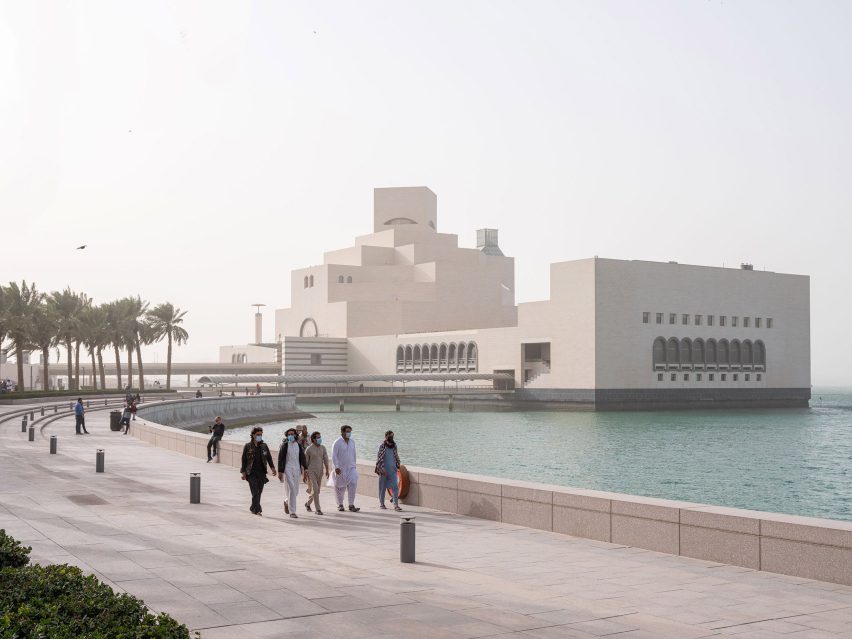
Some projects are repeatedly mentioned across various chapters, as intended by the curators to show consistency in Pei's work.
"We want people to see the process of each theme crosses geographies and periods, there's a consistency – a commitment to city, to history and tradition and how you approach it, some projects recurs," said Surya.
"Pei drew from the regional while shaping the global. His work articulated artistic and cultural ideals while forging urban skylines—negotiated through dialogue and collaboration, and with results that innovated architectural forms and feats of engineering," she added.
The photography is by Dan Leung, courtesy of M+, unless stated otherwise.
IM Pei: Life is Architecture is on display from 29 June 2024 to 5 January 2025 at the M+ Museum. See Dezeen Events Guide for an up-to-date list of architecture and design events taking place around the world.